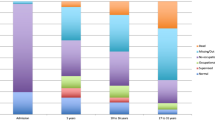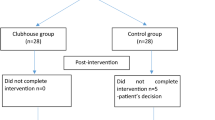Abstract
It has been suggested that the short-term clinical outcome of schizophrenia may be better in developing than in industrialised countries. Little is known of the social outcome of the disorder in the medium term in developing societies. In a study of 120 clinically stable outpatients in a clinic in Nigeria, we examined the social, occupational and residential outcomes of schizophrenia after 13 years. A substantial proportion of patients showed a moderate to severe degree of disability in the areas of occupation and social contact. Four percent were homeless or of unstable abode. While men were particularly disadvantaged in establishing a marital relationship and also evidenced impaired fecundity, women had a more impaired outcome in the domain of frequency and quality of social contact. Poor response to initial treatment and indices of impaired premorbid adjustment were associated with poor outcome 13 years after illness onset. Even though these patients had come predominantly from low social (and occupational) groups, they still manifested a downward drift on the social ladder. In the medium to long term, traditional family networks may be inadequate to prevent patients with schizophrenia in developing societies from acquiring significant and multiple disablement.
Similar content being viewed by others
Author information
Authors and Affiliations
Additional information
Accepted: 21 May 1998
Rights and permissions
About this article
Cite this article
Gureje, O., Bamidele, R. Thirteen-year social outcome among Nigerian outpatients with schizophrenia. Soc Psychiatry Psychiatr Epidemiol 34, 147–151 (1999). https://doi.org/10.1007/s001270050126
Issue Date:
DOI: https://doi.org/10.1007/s001270050126




